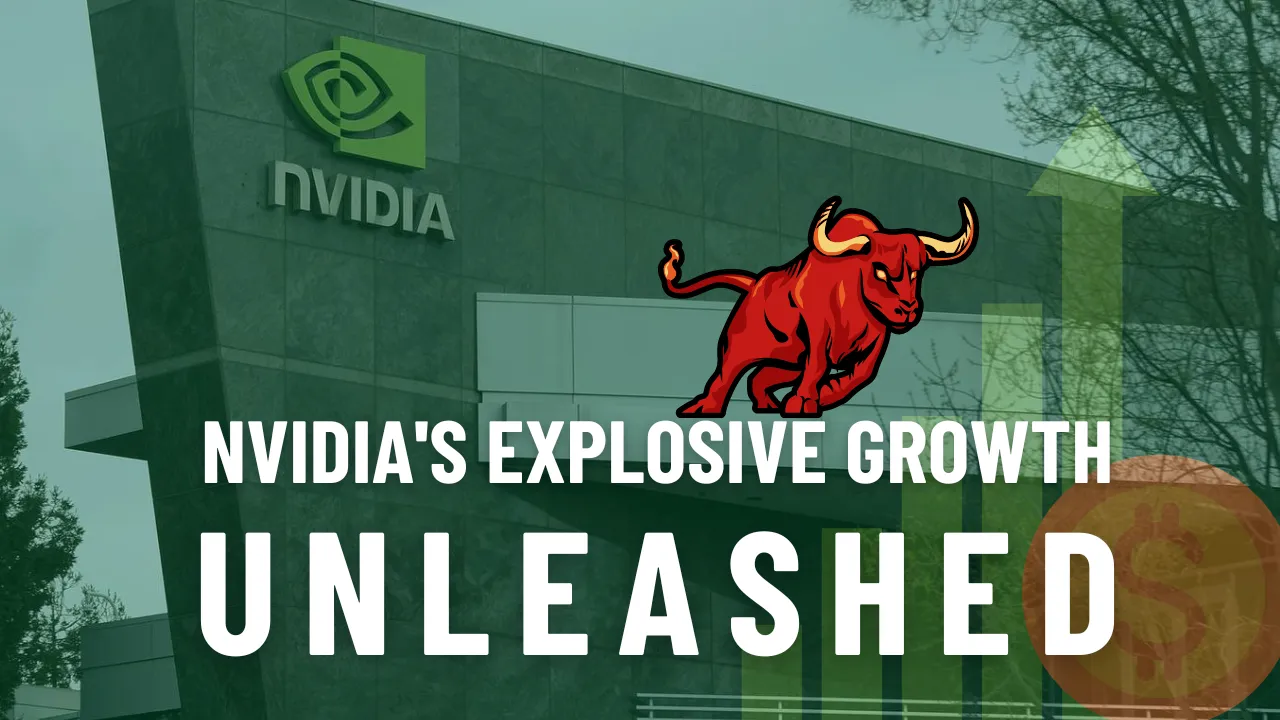If you’ve been keeping tabs on the tech scene, you’ve probably heard the buzz surrounding Nvidia.
And let me tell you, it’s been nothing short of spectacular.
We’re talking about a company that has just wrapped up one of the most impressive years in recent memory.
To see a company of this magnitude not just maintain but boost its sales, profits, and cash flow to such staggering heights is nothing short of extraordinary. It’s a feat that’s left many of us in awe.
What’s behind Nvidia’s stellar performance
We’ll unpack the key factors that have propelled Nvidia to such remarkable heights and spotlight one particular area primed for even more explosive growth.
Let’s break down these mind-blowing numbers from Nvidia’s latest fiscal year, which concluded on January 28th, 2024.
First up, we have Nvidia’s revenue, which skyrocketed to a whopping $60.92 billion, up from $26.97 billion in the previous year.
That’s a jaw-dropping increase of 126%!
Just let that sink in for a moment. We’re talking about a staggering $34 billion surge in revenue in just one year.
It’s relatively common to see smaller companies achieve revenue growth rates of over 100% in a year, especially when their revenue is in the millions.
However, it’s a whole different ball game when dealing with a company like Nvidia, which already boasts revenue in the billions.
Understanding Operating Expenses of Nvidia: The ARM Acquisition Fallout
And here’s the kicker: while revenue soared, Nvidia managed to keep its operating expenses in check with just a 2% increase.
Talk about efficiency!
Let’s reevaluate why Nvidia’s operating expenses appear more favorable.
In 2023, Nvidia incurred a significant $1.4 billion acquisition termination charge related to its proposed acquisition of ARM. To jog your memory, Nvidia had pursued ARM as an acquisition target in 2023, but unfortunately, the deal fell through.
In such acquisition scenarios, it’s common for the acquirer to agree to pay a termination fee if the transaction fails to materialize.
This fee compensates the target company for the disruption caused by the failed acquisition attempt.
That $1.4 billion termination charge wasn’t exactly pocket change—it’s a substantial sum. And yes, in the case of ARM, the transaction with Nvidia ultimately didn’t materialize, resulting in ARM receiving that hefty fee of $1.4 billion.
Now, let’s put things into perspective.
When comparing the operating expenses between 2023 and 2024, it’s crucial to factor in this significant one-time expense.
Without it, 2023’s operating expenses were inflated by $1.4 billion.
By excluding this exceptional charge, we get a clearer picture of Nvidia’s operating expenses, which would have shown an increase of roughly 10% or more year-over-year—still impressive, but not quite as striking as the mere 2% increase evident when including the termination charge.
Examining Operating Income and Profitability
Now, let’s talk about operating income.
Nvidia saw an eye-popping 681% surge in operating income, skyrocketing from $4.2 billion to $32.97 billion.
Yes, you read that right.
That’s a nearly sevenfold increase!
And if that wasn’t impressive enough, net income followed suit, jumping from $4.368 billion to $29.7 billion. That’s a remarkable 581% increase in profitability!
With performance metrics like these, it’s no wonder Nvidia’s stock has been on an absolute tear over the past year.
But what sets Nvidia apart is its ability not just to grow revenue but also massively boost profitability at the same time.
You’re right – it’s rare to see a company achieve a 100% revenue growth rate while increasing profits by nearly 700%.
Many companies that experience rapid revenue growth often do so at the expense of profitability, sacrificing bottom-line performance in pursuit of top-line expansion.
Nvidia’s Strategic Positioning in AI
Nvidia’s strategic positioning in the artificial intelligence (AI) space couldn’t have been timelier.
As the demand for AI solutions surged, Nvidia was at the forefront of this transformative technology revolution.
And you’re spot on – Nvidia’s powerful GPUs played a pivotal role in fueling this surge in AI demand.
Without Nvidia’s cutting-edge GPUs, would groundbreaking AI initiatives like OpenAI’s ChatGPT have been possible?
It’s certainly up for debate, but there’s no denying the critical role of Nvidia’s technology in enabling such innovative AI applications to come to fruition.
Explosive Growth in the Data Center Segment
Now, let’s talk about Nvidia’s data center segment, where the soaring demand for AI drives explosive growth.
This segment reported a staggering 217% increase, underscoring the insatiable appetite for AI solutions across various industries.
The demand for Nvidia’s AI infrastructure knows no bounds, from enterprise software to consumer internet applications, and spans multiple verticals, including automotive, financial services, and healthcare.
The Role of Nvidia’s AI Infrastructure in Various Industries
Nvidia’s AI infrastructure is in high demand, whether installed on-premises at clients’ locations or accessed through leading cloud service providers like AWS, Microsoft Azure, and Google Cloud.
This dual approach to deployment ensures that Nvidia’s AI solutions are accessible to a wide range of clients, catering to their diverse needs and preferences.
Nvidia’s Automotive Revenue Growth
Let’s talk about a segment where Nvidia is scratching the surface: automotive.
In fiscal 2024, Nvidia saw a remarkable 21% increase in automotive revenue, primarily driven by the growth in self-driving platforms.
And here’s the exciting part – we’re just getting started. Self-driving platforms are still in their infancy, but they’re evolving rapidly and adding to Nvidia’s revenue base.
Cars today are getting smarter by the day. From parking themselves to providing lane assist technology and advanced cruise control, the automotive industry is on the brink of a transformative shift.
The Potential of Self-Driving Platforms
While the self-driving car market is still nascent, the growth potential is immense. Nvidia is well-positioned to capitalize on this opportunity.
We might not see explosive growth in this market within the next year or even the year after that.
But looking ahead, say 3 to 5 years, or even further out, the trajectory of driverless car technology could truly take off. And when it does, it can be a game-changer for Nvidia.
Nvidia’s Innovations in AI Technology
Nvidia’s advancements in AI technology, spearheaded by initiatives like Grace Hopper Superchip and its DGX Cloud and AI Foundations, are groundbreaking.
These innovations drive the development of generative AI and large language models, revolutionizing various AI workloads.
Moreover, Nvidia’s strategic foresight extends to the automotive sector, where it anticipates a significant surge in demand for data center processing.
While this growth trajectory may take some time, the automotive segment holds immense potential to become a key driver of Nvidia’s future expansion.
Wrapping Up
Indeed, Nvidia’s prospects are exceptionally promising, with a strategic roadmap that positions it at the forefront of technological innovation.
Investors can anticipate continued growth and value creation from Nvidia as it navigates through current catalysts and prepares to capitalize on future opportunities, such as automotive data center processing and driverless car technology.
Overall, Nvidia stands as a beacon of excellence in the tech industry, with a trajectory that promises continued success and innovation in the years ahead.


